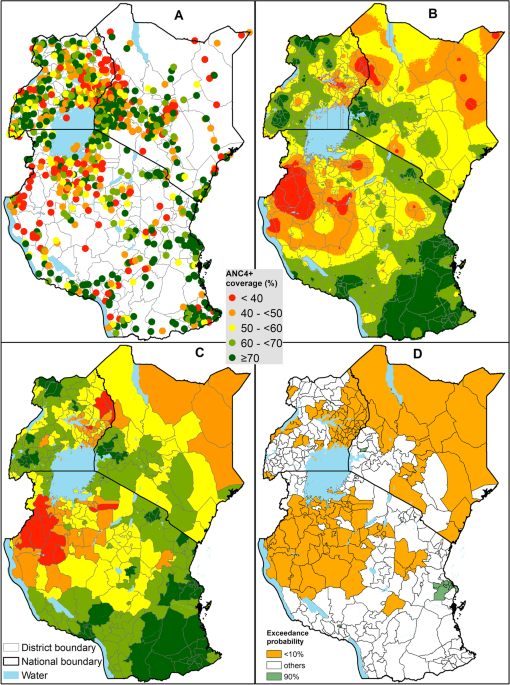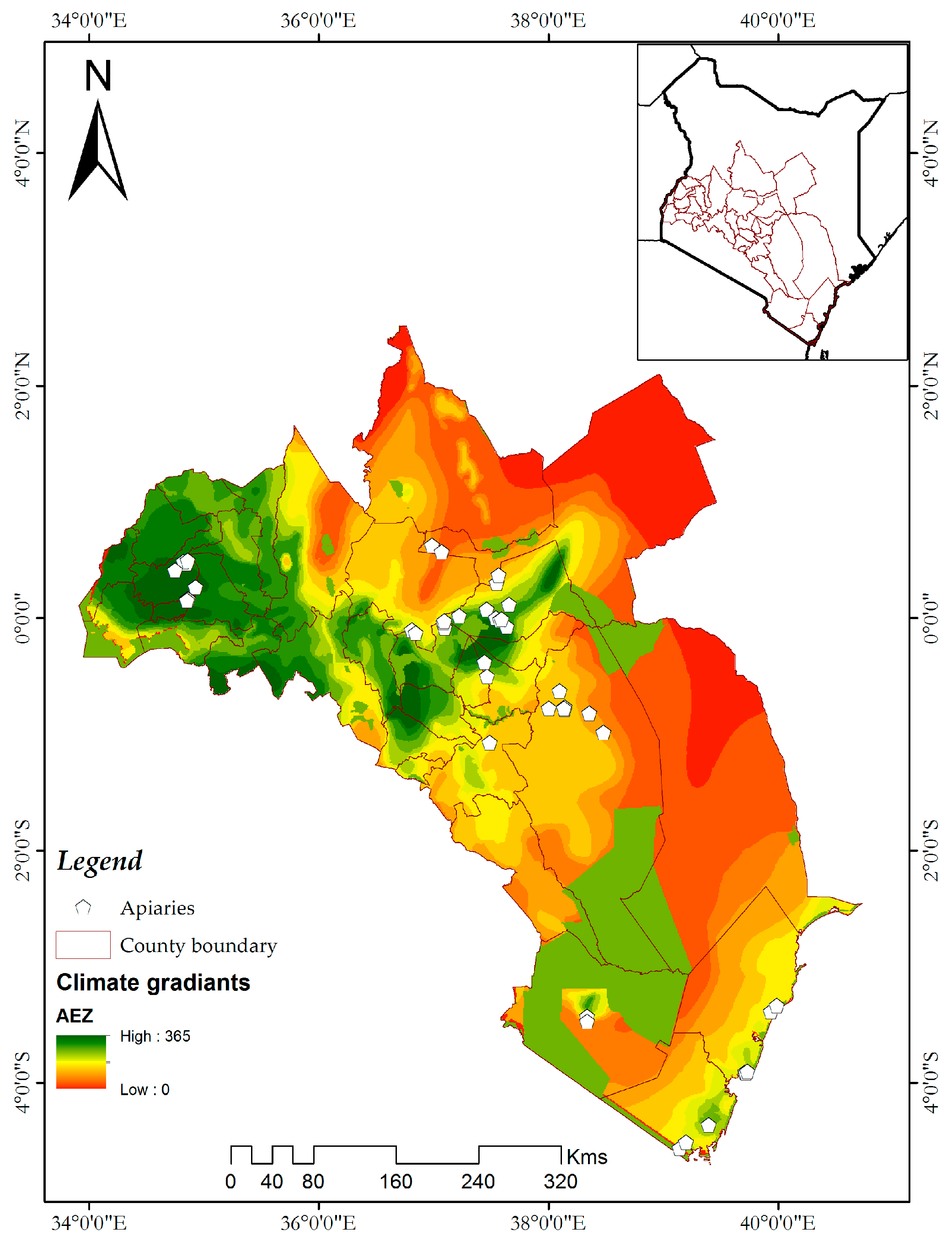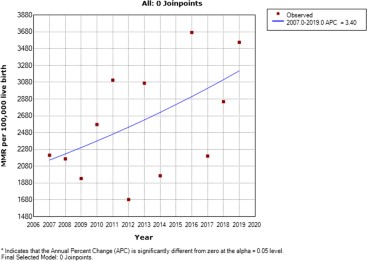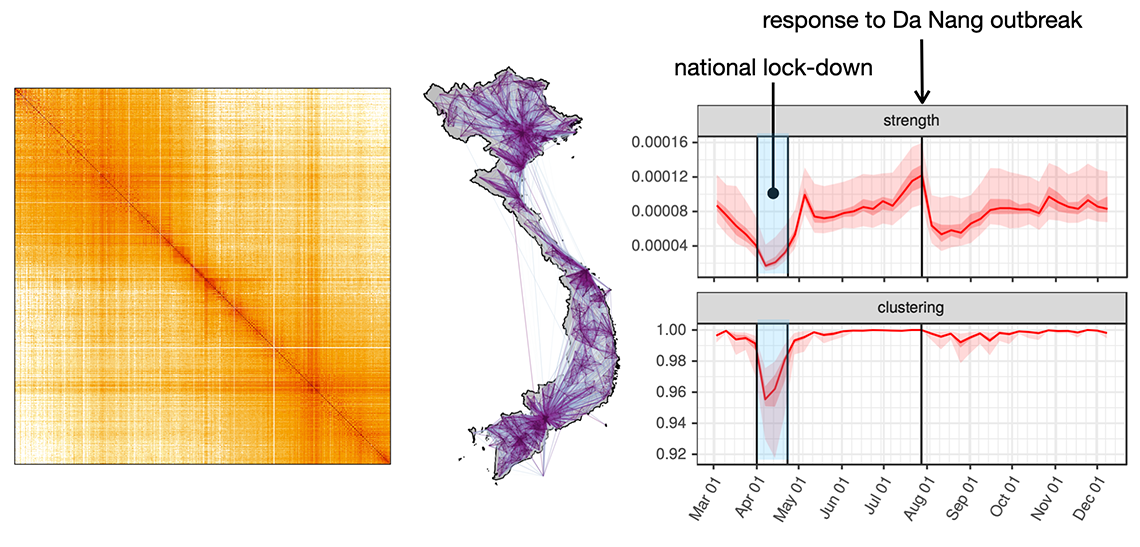Spatial variation and inequities in antenatal care coverage in Kenya, Uganda and mainland Tanzania using model-based geostatistics: a socioeconomic and geographical accessibility lens, BMC Pregnancy and Childbirth
$ 33.50 · 4.5 (388) · In stock

Background Pregnant women in sub-Saharan Africa (SSA) experience the highest levels of maternal mortality and stillbirths due to predominantly avoidable causes. Antenatal care (ANC) can prevent, detect, alleviate, or manage these causes. While eight ANC contacts are now recommended, coverage of the previous minimum of four visits (ANC4+) remains low and inequitable in SSA. Methods We modelled ANC4+ coverage and likelihood of attaining district-level target coverage of 70% across three equity stratifiers (household wealth, maternal education, and travel time to the nearest health facility) based on data from malaria indicator surveys in Kenya (2020), Uganda (2018/19) and Tanzania (2017). Geostatistical models were fitted to predict ANC4+ coverage and compute exceedance probability for target coverage. The number of pregnant women without ANC4+ were computed. Prediction was at 3 km spatial resolution and aggregated at national and district -level for sub-national planning. Results About six in ten women reported ANC4+ visits, meaning that approximately 3 million women in the three countries had <ANC4+ visits. The majority of the 366 districts in the three countries had ANC4+ coverage of 50–70%. In Kenya, 13% of districts had < 70% coverage, compared to 10% and 27% of the districts in Uganda and mainland Tanzania, respectively. Only one district in Kenya and ten districts in mainland Tanzania were likely met the target coverage. Six percent, 38%, and 50% of the districts had at most 5000 women with <ANC4+ visits in Kenya, Uganda, and mainland Tanzania, respectively, while districts with > 20,000 women having <ANC4+ visits were 38%, 1% and 1%, respectively. In many districts, ANC4+ coverage and likelihood of attaining the target coverage was lower among the poor, uneducated and those geographically marginalized from healthcare. Conclusions These findings will be invaluable to policymakers for annual appropriations of resources as part of efforts to reduce maternal deaths and stillbirths.

National and sub-national variation in patterns of febrile case

Forest plot on the prevalence of 8 or more ANC contacts
Assessing the effects of interventions and determinants of child

PDF) Spatial models for the rational allocation of routinely

Trends and causes of maternal death at the Lagos University
Marc Choisy — Centre for Tropical Medicine and Global Health
Marc Choisy — Centre for Tropical Medicine and Global Health

IJGI, Free Full-Text

PDF) The effect of distance on maternal institutional delivery

Spatial analysis of primary healthcare accessibility patterns in

BMC Pregnancy and Childbirth 1/2022
Spatial distribution and predictive factors of antenatal care in Burundi: A spatial and multilevel baseline analysis for the third burundian demographic and health survey

Trends and causes of maternal death at the Lagos University

Levels (range and median) of utilisation, provider and content of care


